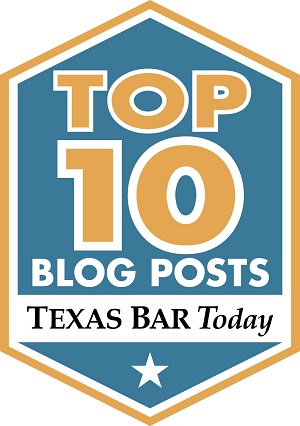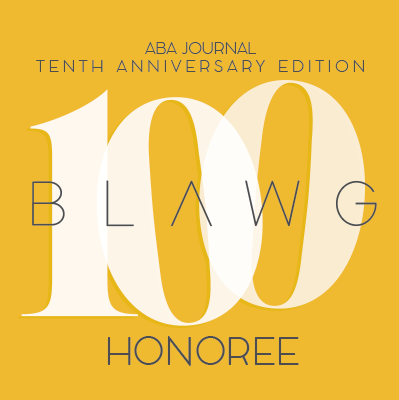In a major ruling from the United States District Court for the District of Montana, the court held that the qualified state beef checkoff (QSBC) programs operating under a Memorandum of Understanding (MOU) with the United States Department of Agriculture (UDSA) do not violate the First Amendment and dismissed the lawsuit brought by the Ranchers-Cattleman Action Legal Fund (R-CALF).

TAMU AgriLife photo by Blair Fannin
Background
In 1985, Congress passed the Beef Promotion and Research Act, which imposed a $1 per head assessment each time cattle are sold in the United States. The funds from this assessment, known as a “checkoff” are used to fund promotional campaigns, conduct research, and probate consumer education about beef. Congress also created the Beef Board and the Beef Promotion Operating Committee to run the checkoff program.
Additionally, Congress recognized there were already promotion, research, and education programs established in many states. In light of that, Congress allowed for QSBCs, state entities that were then certified by the Beef Board, to collect the federal beef checkoff assessments on behalf of the Beef Board. QSBCs that collect federal beef checkoff funds may retain $.50 of the $1 assessment to fund state-level promotional activities, while the remaining $.50 must be sent to the Beef Board. This is the default payment method of checkoff funds in states with a QSBC. A producer in a state who does not want a portion of his or her assessment to remain with the state QSBC may opt out by submitting a redirection request, which instructs the QSBC to remit the full $1 to the Beef Board.
QSBCs may use checkoff dollars only for limited purposes–promotional activities that “strengthen the beef industry’s position in the marketplace.” They are prohibited from using any of the checkoff funds to influence governmental policy or to promote unfair or deceptive practices.
Litigation
R-CALF filed suit against the USDA and the Montana Beef Council in 2016 claiming that Montana Beef Council’s advertising, which did not differentiate between US beef and foreign beef, violated the First Amendment rights of its members. In June 2017, adopting the recommendation of the Magistrate Judge, the court entered a preliminary injunction in favor of R-CALF on the basis that the beef checkoff program violated the First Amendment. The Ninth Circuit Court of Appeals affirmed.
Then, in 2018, R-CALF successfully moved to add 15 other states to the litigation, including Texas, whose state beef councils were similar to Montana.
During the time the case was on appeal, the USDA entered into MOUs with many of the qualified state beef councils that are parties to the current litigation. The MOUs give the USDA “significant discretion” to approve or reject any of the QSBC’s promotional activities. Under the MOUs, the QSBCs agree to submit any promotion, advertising, research, and consumer information projects to USDA for pre-approval. Additionally, the QSBC is required to notify the USDA of any board meetings and allow a USDA official to attend. The USDA may “direct the Beef Board to de-certify” the QSBC if the QSBC fails to comply with the terms of the MOU, which would prohibit the QSBC from receiving checkoff funds.
Based upon these new MOUs, the Magistrate Judge recommended that the court reverse course and find in favor of the beef councils.
Opinion
The federal court sided with the checkoff program. [Read full opinion here.]
Standing
First, the court determined that R-CALF had standing required to bring this case. Generally, speaking, in order to prove standing, a party must satisfy a three-party test: injury-in-fact, causation, and redressability. Organizations such as R-CALF can rely on additional factors to show that the organization has standing to file a lawsuit. These factors, sometimes referred to as “associational standing” require R-CALF to prove (1) its members would otherwise have standing to sue; (2) the suit is germane to the organization’s purpose; and (3) neither the claim asserted nor the relief requested requires participation of the association’s individual members. The magistrate judge found each of these factors to be met and neither party objected to that determination. Thus, the court did not directly address this issue.
However, the Montana Beef Council did object to the magistrate judge’s finding that R-CALF had satisfied the redressability prong of the traditional standing analysis. Essentially, redressability requires the plaintiff show that a judgment in his or her favor would provide suitable relief for the injuries alleged. This helps to avoid a court issuing a mere advisory opinion. The court rejected each of the Defendants’ arguments that R-CALF’s claims were not redressable, finding that often the arguments actually went to the merits of the case, rather than the question of redressability.
Government versus Private Speech
The First Amendment prohibits requiring private parties from subsidizing private speech with which the private party disagrees. This type of prohibition does not apply for government speech, however, meaning that the government can require persons to subsidize government speech. This distinction can be complicated when a private organization engages in government speech. The US Supreme Court held that a private organization engages in government speech only when the federal government “effectively controls” the message of the private entity.
In the 2005 Johanns v. Livestock Marketing Association, the US Supreme Court addressed this issue in the context of the national beef checkoff. The Court said that for a private organization’s speech to be deemed government speech, the government must “control the speech from beginning to end.” The Court listed a number of factors to consider to determine whether the required control is present including whether statutes and regulations generally specify what the promotional campaigns may and may not contain, whether government officials may attend and participate in open meetings at which the content development occurs, and whether the government retains ultimate veto power of the private organizations’ advertisements “right down to the wording.” The Court in Johanns held that because the national beef checkoff program was subject to significant control by Congress and USDA, the program’s promotional campaigns amounted to government speech.
The key issue in this case, then, is whether the state level QSBC’s promotion and advertising is private speech or government speech. Initially, the court briefly notes that without the MOUs, its 2016 determination that the QSBCs were engaging in private speech, as compared to governmnet speech, was no different. However, the fact that the parties have since entered into these MOUs significantly changed the court’s analysis of whether the Montana Beef Council was engaging in private or private speech. The court walked through each of the Johanns factors in light of the MOUs, to determine if, by having the MOUs in lpace, the QSBCs were engaging in government speech.
First, the court found that the QSBC members remain answerable to the USDA through the certification process. The Beef Board, through the certification process, approves all QSBCs and without such approval, checkoff funding is not available to the QSBC. Further, under the MOUs, the USDA retains “complete and final approval over all QSBC ads.” The court rejected R-CALF’s argument that unless at least some of the QSBC Board members were appointed by the government, they did not engage in government speech, calling the argument “bordering on frivolous.” The focus is not on the appointment process for board members, but instead on the QSBC’s “answerability to the government,” which the QSBCs adequately proved.
Second, the court found that pursuant to the MOUs, the USDA now “exercises final approval over all QSBC advertisements.” The judge noted that pre-approval is required for all promotion, advertising, research, consumer information projects, and potential contracts. The court quoted the Magistrate’s recommendation, “MOUs give broad pre-approval authority, without much, if any, limitation. At bottom, QSBCs face the choice of getting USDA approval or not speaking at all.” The court rejected R-CALF’s argument that the USDA was essentially a rubber stamp by distinguishing this case from other cases (where that was the holding) by again noting the pre-approval authority vested in USDA by the MOUs.
Attribution of the Speech to Private Parties Does Not Transform Government Speech to Private Speech
Next, the court rejected R-CALF’s argument that because the speech is presented by a private entity (the QSBCs), it is private speech. R-CALF argues that the analysis here should turn on whether the viewers believe it is the government speaking. The court noted that this is merely one potential factor in the analysis and every other Johanns factor weighed in favor of the QSBCs. The court also noted that the language in Johanns indicated this might be an issue if a viewer would likely view the challenged speech as coming from the challenger, not the private entity creating the content. For example, if R-CALF argued that a viewer would likely attribute the QSBC’s speech to R-CALF, the analysis might differ, but that was not their argument.
Third-Party Organizations
R-CALF also argued that the QSBCs violated the First Amendment by providing funds to third-party entities, who may then use those funds to make advertisements. In other words, the QSBCs could simply allocate funds to another private organization that was not required to obtain approval for messaging from USDA, thereby circumventing the MOU and creating private speech. The court rejected this argument as well, finding that the USDA was in a better position to remedy any sort of “shell game” that does exist. USDA would be better suited than the court to look into budget line items and remedy any potential abuse of third-party funding. Additionally, the court noted there was “no authority” for the proposition that the government must control all speech not only by the QSBC, but also any third-party entity that receives payment therefrom.
Injunction
Next, R-CALF argued that even if the QSBCs speech was government in nature, it was still entitled to an injunction because the MOUs were revocable. The court rejected this argument as well. First, the court noted that the USDA entered into MOUs with QSBCs that were not involved in this litigation, thus indicating a broader policy change rather than a “change with the sole aim of ending this litigation.” Second, the court noted that the USDA could only revoke the MOUs with consent from the QSBCs, who face the choice of operating under the MOU or losing their checkoff funding. These two considerations led the court to find that the MOUs were “entrenched” in the way the USDA and QSBCs make use of funds.
Redirection Rule
Lastly, the USDA argued that the redirection rule–which would allow producers to redirect their full assessment to the national Beef Board, rather than half going to the QSBC–did not remedy R-CALF’s complaints. Nevertheless, the USDA did not need to rely upon this rule as it was successful in arguing the MOUs made the state checkoff’s advertising, as approved by USDA, government speech.
Based on this analysis, the court granted the USDA and QSBCs’ motion for summary judgment and dismissed the suit.
R-CALF has stated they are disappointed with the ruling and are considering their next steps, including the possibility of an appeal.











